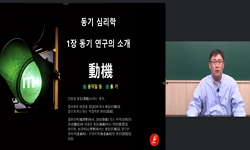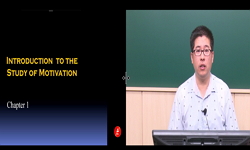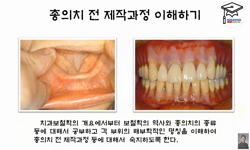본 연구 목적은 통증 두려움이 금전동기에 따라 회피행동에 미치는 영향을 살펴보는 것이다. 건강한 남녀 80명을 대상으로 통증 두려움과 금전동기 조건에 따라 4집단 중 1개 집단에 무선 할...
http://chineseinput.net/에서 pinyin(병음)방식으로 중국어를 변환할 수 있습니다.
변환된 중국어를 복사하여 사용하시면 됩니다.
- 中文 을 입력하시려면 zhongwen을 입력하시고 space를누르시면됩니다.
- 北京 을 입력하시려면 beijing을 입력하시고 space를 누르시면 됩니다.
https://www.riss.kr/link?id=A106101634
- 저자
- 발행기관
- 학술지명
- 권호사항
-
발행연도
2019
-
작성언어
Korean
-
주제어
통증 두려움 ; 동기 ; 회피행동 ; 심박변이도 ; 경쟁목표 차단 ; Pain-related fear ; Motivation ; Avoidance behavior ; Heart rate variability ; Goal shielding
-
등재정보
KCI등재
-
자료형태
학술저널
-
수록면
117-124(8쪽)
-
KCI 피인용횟수
1
- DOI식별코드
- 제공처
- 소장기관
-
0
상세조회 -
0
다운로드
부가정보
국문 초록 (Abstract)
본 연구 목적은 통증 두려움이 금전동기에 따라 회피행동에 미치는 영향을 살펴보는 것이다. 건강한 남녀 80명을 대상으로 통증 두려움과 금전동기 조건에 따라 4집단 중 1개 집단에 무선 할당했다. 실험결과, 고-통증 두려움 집단이 저-통증 두려움 집단에 비해 영상 시청과 과제 수행 동안 자율신경계가 더욱 활성화되었다. 또한 통증 두려움과 금전동기 조건에 따라 회피행동에 미치는 상호작용 효과가 유의했다. 저-통증 두려움 집단에서는 금전동기 조건에 상관없이 과제 수행 지연시간에 유의한 차이가 없었던 반면, 고-통증 두려움 집단에서는 금전동기가 높을수록 과제 수행 지연시간이 유의하게 더 짧았다. 본 연구는 수정된 두려움-회피 모형을 지지하는 경험적 증거를 제공하며 경쟁목표 차단 기제의 발현을 실험적으로 증명한다.
다국어 초록 (Multilingual Abstract)
Background: The purpose of this study was to examine the effects of monetary motivation on the relationship between pain-related fear and avoidance behavior. Methods: Eighty healthy volunteers were randomly assigned to one of four groups in accordanc...
Background: The purpose of this study was to examine the effects of monetary motivation on the relationship between pain-related fear and avoidance behavior.
Methods: Eighty healthy volunteers were randomly assigned to one of four groups in accordance with task conditions of pain-related fear (high or low) and monetary motivation (high or low).
Results: The autonomic nervous system was more active in the high pain-related fear group than in the low pain-related fear group as the participants watched a video and performed a task. Also, pain-related fear and monetary motivation had a significant interaction effect on avoidance behavior. High monetary motivation was associated with a shorter delay time during task performance in the high pain-related fear group. No significant difference was observed in the delay time in the low pain-related fear group.
Conclusions: This study provides empirical evidence supporting the modified fear-avoidance model and experimentally proves the activation of the goal shielding mechanism.
목차 (Table of Contents)
- Key messages
- Abstract
- 서론
- 연구방법
- 결과
- Key messages
- Abstract
- 서론
- 연구방법
- 결과
- 고찰
- References
참고문헌 (Reference)
1 이현희, "한국판 정적 정서 및 부적 정서 척도 (Positive Affect and Negative Affect Schedule; PANAS)의 타당화 연구" 한국임상심리학회 22 (22): 935-946, 2003
2 김시온, "자아고갈 상태에서 동기가 통증반응에 미치는 영향: 냉압과제를 사용하여" 한국건강심리학회 23 (23): 801-811, 2018
3 Chris Askew, "Vicarious learning and the development of fears in childhood" Elsevier BV 45 (45): 2616-2627, 2007
4 Sungkun Cho, "Validation of the Korean version of the Pain Catastrophizing Scale in patients with chronic non-cancer pain" Springer Science and Business Media LLC 22 (22): 1767-1772, 2013
5 Sullivan MJ, "The pain catastrophizing scale: development and validation" 7 (7): 524-559, 1995
6 Catalina Köpetz, "The multifinality constraints effect: How goal multiplicity narrows the means set to a focal end." American Psychological Association (APA) 100 (100): 810-826, 2011
7 Emily L. Zale, "The Relation Between Pain-Related Fear and Disability: A Meta-Analysis" Elsevier BV 14 (14): 1019-1030, 2013
8 Maaike Leeuw, "The Fear-Avoidance Model of Musculoskeletal Pain: Current State of Scientific Evidence" Springer Science and Business Media LLC 30 (30): 77-94, 2007
9 UDI NUSSINOVITCH, "The Efficiency of 10-Second Resting Heart Rate for the Evaluation of Short-Term Heart Rate Variability Indices" Wiley 34 (34): 1498-1502, 2011
10 Jens Förster, "Seven Principles of Goal Activation: A Systematic Approach to Distinguishing Goal Priming From Priming of Non-Goal Constructs" SAGE Publications 11 (11): 211-233, 2016
1 이현희, "한국판 정적 정서 및 부적 정서 척도 (Positive Affect and Negative Affect Schedule; PANAS)의 타당화 연구" 한국임상심리학회 22 (22): 935-946, 2003
2 김시온, "자아고갈 상태에서 동기가 통증반응에 미치는 영향: 냉압과제를 사용하여" 한국건강심리학회 23 (23): 801-811, 2018
3 Chris Askew, "Vicarious learning and the development of fears in childhood" Elsevier BV 45 (45): 2616-2627, 2007
4 Sungkun Cho, "Validation of the Korean version of the Pain Catastrophizing Scale in patients with chronic non-cancer pain" Springer Science and Business Media LLC 22 (22): 1767-1772, 2013
5 Sullivan MJ, "The pain catastrophizing scale: development and validation" 7 (7): 524-559, 1995
6 Catalina Köpetz, "The multifinality constraints effect: How goal multiplicity narrows the means set to a focal end." American Psychological Association (APA) 100 (100): 810-826, 2011
7 Emily L. Zale, "The Relation Between Pain-Related Fear and Disability: A Meta-Analysis" Elsevier BV 14 (14): 1019-1030, 2013
8 Maaike Leeuw, "The Fear-Avoidance Model of Musculoskeletal Pain: Current State of Scientific Evidence" Springer Science and Business Media LLC 30 (30): 77-94, 2007
9 UDI NUSSINOVITCH, "The Efficiency of 10-Second Resting Heart Rate for the Evaluation of Short-Term Heart Rate Variability Indices" Wiley 34 (34): 1498-1502, 2011
10 Jens Förster, "Seven Principles of Goal Activation: A Systematic Approach to Distinguishing Goal Priming From Priming of Non-Goal Constructs" SAGE Publications 11 (11): 211-233, 2016
11 Ryan RM, "Self-determination theory and the facilitation of intrinsic motivation, social development, and well-being" 55 (55): 68-78, 2000
12 Kim Helsen, "Observational Learning and Pain-Related Fear: An Experimental Study With Colored Cold Pressor Tasks" Elsevier BV 12 (12): 1230-1239, 2011
13 Stefaan Van Damme, "No pain no gain? Pursuing a competing goal inhibits avoidance behavior" Ovid Technologies (Wolters Kluwer Health) 153 (153): 800-804, 2012
14 Robin L. Aupperle, "Neural substrates of approach-avoidance conflict decision-making" Wiley 36 (36): 449-462, 2015
15 Spielberger CD, "Manual for the state-trait anxiety inventory" Consulting Psychologists Press 1970
16 Liesbet Goubert, "Learning About Pain From Others: An Observational Learning Account" Elsevier BV 12 (12): 167-174, 2011
17 Luoma JB, "Learning ACT: An acceptance & commitment therapy skills-training manual for therapists" New Harbinger Publications 2007
18 Andreas Olsson, "Learned Fear of “Unseen” Faces after Pavlovian, Observational, and Instructed Fear" SAGE Publications 15 (15): 822-828, 2016
19 Kim KH, "Korean-BAS/BIS Scale" 6 (6): 19-37, 2001
20 Kim Helsen, "Indirect Acquisition of Pain-Related Fear: An Experimental Study of Observational Learning Using Coloured Cold Metal Bars" Public Library of Science (PLoS) 10 (10): e0117236-, 2015
21 M. Malik, "Heart rate variability: Standards of measurement, physiological interpretation, and clinical use" Oxford University Press (OUP) 17 (17): 354-381, 1996
22 Paolo Riva, "Gender effects in pain detection: Speed and accuracy in decoding female and male pain expressions" Wiley 15 (15): 985.e1-985.e11, 2011
23 Shah JY, "Forgetting all else: on the antecedents and consequences of goal shielding" 83 (83): 1261-1280, 2002
24 Johan W.S. Vlaeyen, "Fear-avoidance model of chronic musculoskeletal pain: 12 years on" Ovid Technologies (Wolters Kluwer Health) 153 (153): 1144-1147, 2012
25 Johan W.S. Vlaeyen, "Fear-avoidance and its consequences in chronic musculoskeletal pain: a state of the art" Ovid Technologies (Wolters Kluwer Health) 85 (85): 317-332, 2000
26 Geert Crombez, "Fear-Avoidance Model of Chronic Pain" Ovid Technologies (Wolters Kluwer Health) 28 (28): 475-483, 2012
27 Watson D, "Development and validation of brief measures of positive and negative affect: the PANAS scales" 54 (54): 1063-1070, 1988
28 Stefaan Van Damme, "Coping with pain: A motivational perspective" Ovid Technologies (Wolters Kluwer Health) 139 (139): 1-4, 2008
29 Nathalie Claes, "Competing Goals Attenuate Avoidance Behavior in the Context of Pain" Elsevier BV 15 (15): 1120-1129, 2014
30 Vlaeyen JW, "Cognitive and behavioral factors in fibromyalgia: mood, goals, and task performance" 17 (17): 295-301, 2009
31 Lee C, "Clinical use of Heart rate variability by comparison of measurement for 3 and 5 minutes" 5 (5): 523-528, 2015
32 Rosengren DB, "Building motivational interviewing skills: A practitioner workbook" The Guilford Press 2009
33 Carver CS, "Behavioral inhibition, behavioral activation, and affective responses to impending reward and punishment: the BAS/BIS scales" 67 (67): 319-333, 1994
34 Sylvia D. Kreibig, "Autonomic nervous system activity in emotion: A review" Elsevier BV 84 (84): 394-421, 2010
35 Susan M. Bögels, "Attention processes in the maintenance and treatment of social phobia: hypervigilance, avoidance and self-focused attention" Elsevier BV 24 (24): 827-856, 2004
36 Richard J. Davidson, "Anterior cerebral asymmetry and the nature of emotion" Elsevier BV 20 (20): 125-151, 1992
37 Martin Radespiel-Tr�ger, "Agreement of two different methods for measurement of heart rate variability" Springer Science and Business Media LLC 13 (13): 99-102, 2003
38 Kruglanski AW, "A theory of goal systems" 34 : 331-378, 2002
39 Kim JT, "A Study Based on the Standardization of the STAI for Korea" 21 (21): 1223-1229, 1978
동일학술지(권/호) 다른 논문
-
- 대한스트레스학회
- 이유빈(Ubin Yi)
- 2019
- KCI등재
-
Heterogeneous Trajectories of Cognitive Function in Older Adults with Diabetes
- 대한스트레스학회
- Chanhee Kim(김찬희)
- 2019
- KCI등재
-
- 대한스트레스학회
- 권태균
- 2019
- KCI등재
-
일반아마추어 골퍼의 골프심리 및 심리적 보호요인과 골프스트레스 간의 관계
- 대한스트레스학회
- 최진훈
- 2019
- KCI등재
분석정보
인용정보 인용지수 설명보기
학술지 이력
| 연월일 | 이력구분 | 이력상세 | 등재구분 |
|---|---|---|---|
| 2022 | 평가예정 | 재인증평가 신청대상 (재인증) | |
| 2019-01-01 | 평가 | 등재학술지 유지 (계속평가) |  |
| 2017-03-01 | 학술지명변경 | 외국어명 : THE KOREAN JOURNAL OF STRESS RESEARCH -> stress |  |
| 2016-01-01 | 평가 | 등재학술지 선정 (계속평가) |  |
| 2015-01-01 | 평가 | 등재후보학술지 유지 (계속평가) |  |
| 2013-01-01 | 평가 | 등재후보학술지 유지 (기타) |  |
| 2012-01-01 | 평가 | 등재후보 1차 FAIL (기타) |  |
| 2011-01-01 | 평가 | 등재후보학술지 유지 (등재후보2차) |  |
| 2010-01-01 | 평가 | 등재후보 1차 PASS (등재후보1차) |  |
| 2009-01-01 | 평가 | 등재후보학술지 유지 (등재후보1차) |  |
| 2007-01-01 | 평가 | 등재후보학술지 선정 (신규평가) |  |
| 2006-06-30 | 학회명변경 | 한글명 : 대한신심스트레스학회 -> 대한스트레스학회영문명 : The Korean Society Of Biosociobehavioral Science -> The Korean Society of Stress Medicine | |
| 2006-06-27 | 학회명변경 | 한글명 : 대한신심스트레스학회 -> 대한스트레스학회영문명 : The Korean Society Of Biosociobehavioral Science -> The Korean Society of Stress Medicine |
학술지 인용정보
| 기준연도 | WOS-KCI 통합IF(2년) | KCIF(2년) | KCIF(3년) |
|---|---|---|---|
| 2016 | 1.76 | 1.76 | 1.63 |
| KCIF(4년) | KCIF(5년) | 중심성지수(3년) | 즉시성지수 |
| 1.61 | 1.44 | 2.211 | 0.2 |





 DBpia
DBpia







